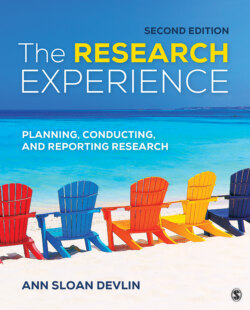Читать книгу The Research Experience - Ann Sloan Devlin - Страница 143
Single- and Double-Blind Approaches to Research
ОглавлениеIn Chapter 1, we talked in depth about the fact that people’s expectations or schemas shape their view of the world. The manner in which researchers approach their research can also shape outcomes. Remember the “Problems in Scientific Thinking” Michael Shermer (1997) listed, including “Theory influences observations” and “The observer changes the observed”? As researchers, we state hypotheses, which we hope will be supported. Our behavior can clearly shape research outcomes, and we must guard against that. Just think back to the selection of stimuli from Amos Tversky and Daniel Kahneman (1973), discussed in Chapter 1, in which the letter K led to support for their hypothesis about the availability heuristic, whereas other researchers have not verified that finding with different letters (Fiedler, 2011).
What steps can we take to make sure we do not influence research outcomes? Among the different approaches people have suggested are using a single-blind or a double-blind approach. In a single-blind approach, participants do not know their research condition. The use of a single-blind approach is common in research. It is the situation in which participants do not know whether they are being given the experimental treatment or a control (placebo). In a double-blind approach, neither participants nor researchers know to which condition the participants have been assigned. The double-blind approach is commonly employed in medical research because the outcomes are important and people’s beliefs (both those of the participants and the researchers) may influence the efficacy of the treatment.
